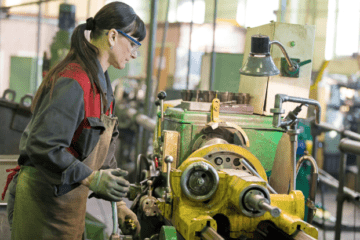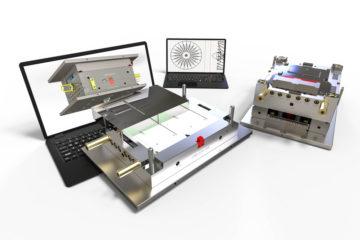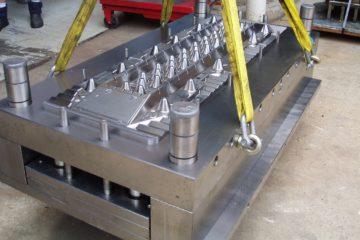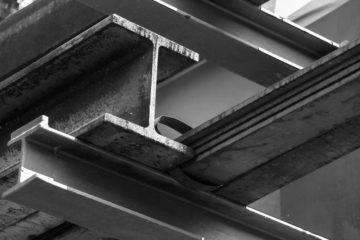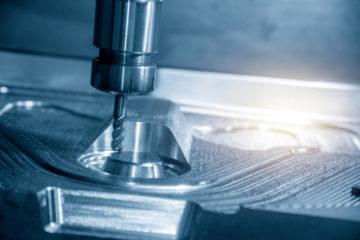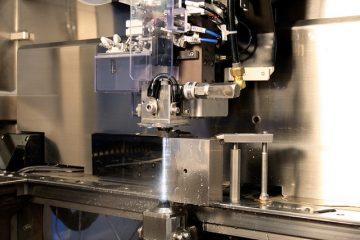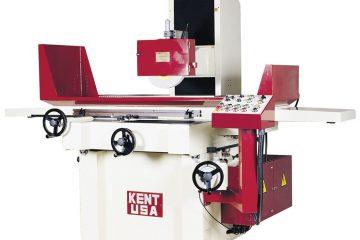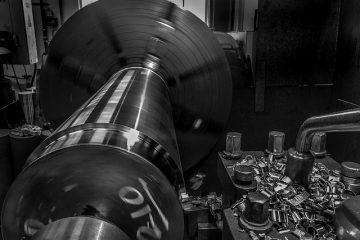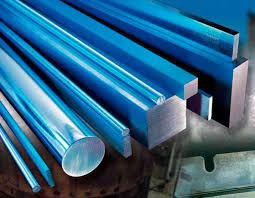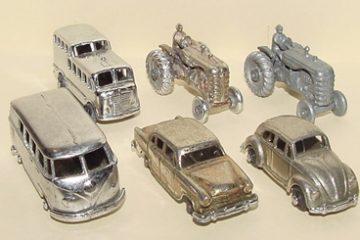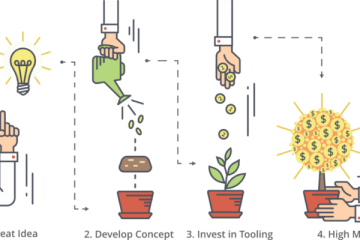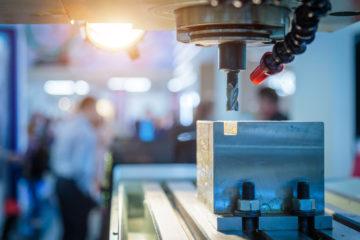How does an EDM work? An EDM (or Electrical Discharge Machine) burns conductive metals by creating a spark erosion between a copper (or graphite) electrode which is electronically charged, and a workpiece which is not electronically charged.
In general terms, a machinist will make an electrode which will be used as the “cutting piece” in the EDM process. The electrode is then fitted in the EDM, the workpiece is then attached to a work bed below the electrode. The work bed will move on 2 axes, so that the electrode is aligned correctly on the workpiece. Once it’s properly aligned, the head of the EDM (which holds the electrode) will begin to lower into the workpiece. As it approaches the piece the difference in electronic charge will force the electrical current to jump and spark over to the workpiece. This spark will erode the workpiece and the electrode can then progress deeper into the work piece.
As you can see, EDM as a process doesn’t require any force, or physical contact between the electrode and workpiece. This means that the machine has a long lifespan. Typical material used in EDM are hardened steels, high performance alloys, carbides and titanium. It is however, limited to conductive metals. As you can imagine, these materials are generally used in heavy industries or industries that require robust components like the aerospace industry.
EDM is a highly accurate, machining technique which can produce very fine surface finishes. Sub-micron tolerances are generally used in the industry, but the tighter the tolerance the longer the machining process will be. This tolerance is dictated by the size of the spark gap used to make the burn. This gap is typically 0.1mm or less. However, to give you an idea of speed, the latest generations of EDM machines can cut up to 400mm² per minute. The speed is also dependent on your electrical power generation.
If you’d like to learn more about EDM, or if you a tooling repair that you don’t know how to machine, contact us about a free 1-hour meeting.
Subscribe to Our Newsletter
Get the latest news from Dienamics into your inbox






